A paper published today in the Journal of Atmospheric and Solar-Terrestrial Physics finds "strong evidence" of a link between thunderstorm and solar activity in Brazil from 1951-2009. According to the authors, thunderstorm "behavior with respect to the 11-year solar cycle suggest a global mechanism probably related to a solar magnetic shielding effect acting on galactic cosmic rays as an explanation for the relationship of thunderstorm and solar activity," which would corroborate Svensmark's theory of cosmoclimatology.
The relationship between thunderstorm and solar activity for Brazil from 1951 to 2009
- a Camilo Castelo Branco University (Unicastelo), São Jose dos Campos, Sao Paulo, 12247-004, Brazil
- b ELAT/CCST, National Institute of Space Research (INPE), São Jose dos Campos, Sao Paulo, 12227-010, Brazil
Highlights
- •
- First results on the relationship between solar and thunderstorm activity in Brazil.
- •
- Strong evidence of anti-phase correlation between solar and thunderstorm activity in Brazil.
- •
- New statistical method for evaluating correlation between solar and thunderstorm activity.
Abstract
The goal of this article is to investigate the influence of solar
activity on thunderstorm activity in Brazil. For this purpose, thunder
day data from seven cities in Brazil from 1951 to 2009 are analyzed with
the wavelet method for the first time. To identify the 11-year solar
cycle in thunder day data, a new quantity is defined. It is named TD1
and represents the power in 1-year in a wavelet spectrum of monthly
thunder day data. The wavelet analysis of TD1 values shows more clear
the 11-year periodicity than when it is applied directly to annual
thunder day data, as it has been normally investigated in the
literature. The use of this new quantity is shown to enhance the
capability to identify the 11-year periodicity in thunderstorm data.
Wavelet analysis of TD1 indicates that six out seven cities investigated
exhibit periodicities near 11 years, three of them significant at a 1%
significance level (p < 0.01).
Furthermore, wavelet coherence analysis demonstrated that the 11-year
periodicity of TD1 and solar activity are correlated with an anti-phase
behavior, three of them (the same cities with periodicities with 1%
significance level) significant at a 5% significance level (p <
0.05). The results are compared with those obtained from the same data
set but using annual thunder day data. Finally, the results are compared
with previous results obtained for other regions and a discussion about
possible mechanisms to explain them is done. The
existence of periodicities around 11 years in six out of seven cities
and their anti-phase behavior with respect to 11-year solar cycle
suggest a global mechanism probably related to a solar magnetic
shielding effect acting on galactic cosmic rays as an explanation for
the relationship of thunderstorm and solar activity, although more
studies are necessary to clarify its physical origin.




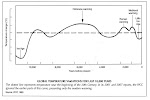


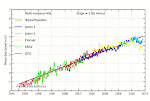

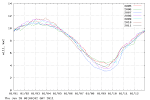

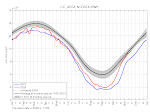

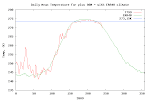


I gotta bookmark this website it seems extremely helpful very useful. Thanks
ReplyDeleteclipping path service